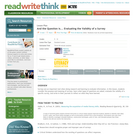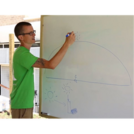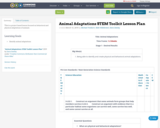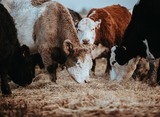
Using the Google developed lessons to learn Android Development.
- Subject:
- Applied Science
- Computer Science
- Material Type:
- Activity/Lab
- Lesson
- Lesson Plan
- Teaching/Learning Strategy
- Date Added:
- 03/06/2019

Using the Google developed lessons to learn Android Development.

This Chapter will cover the following topics Android Operating System Android Architecture Android Applications Android Application Development Tools

Students will build fluency skills through a Drama Station where they can choose to perform a Reader’s Theater activity, poetry selection, jokes, a favorite book, or a song.The students will develop their speaking and listening skills and then evaluate themselves using a rubric assessment.

In this lesson, students learn to ask the right questions about the validity of surveys.

There's no question that students will be able to compose good survey questions by the end of this lesson.

This lesson provides students with an introduction to Angel Island. The lesson begins with students completing a timeline of Chinese immigration to America. The progression of events will help them understand the escalation of anti-Chinese sentiment in America culminating with the Chinese Exclusion Act of 1882, the first law that restricted immigration based on nationality.
2021 Social Science Standards Integrated with Ethnic Studies:
Civics and Government: 8.7, 8.8, HS.1, HS.2
Historical Knowledge: 8.22, 8.25, HS.52, HS.63, HS.64, HS.65
Historical Thinking: 7.25, 8.30, 8.31, 8.32, HS.67, HS.69
Social Science Analysis: 7.28, 8.33, 8.36, HS.72, HS.73, HS.74

Students explore the characteristics of complementary, supplementary, and vertical angles.

This url lesson will teach you about various components of anglrs

In this lesson, students will apply the use of angles to a real-world problem—finding the angle of the sun to determine the placement of solar panels. This lesson can be used to teach about angles, or to reinforce and apply understanding of angles.

In this seminar you will begin to explore the adaptations of the polar bear and learn how they stay alive in such a harsh environment. You will be thinking interdependently and using the complex reasoning skill of comparing. You will compare the adaptations of one arctic creature to another. Additionally, you will find a way to persuade people to save endangered arctic animals.StandardsStandard - 3.1.4.A5Describe common functions living things share to help them function in a specific environment.

This lesson will introduce camouflage and adaptations, enabling students to be able to identify the importance of animals adapting in a changing climate.

This is a project based lesson focused on behavioral and physical adaptations of animals.

HyperSlides are digital lessons/units that help students learn the material in a way that is engaging and inquiry-based. Students will work together to complete a HyperSlides unit centering around animal adaptations for standards in grades 3-5. Students will work creatively and collaboratively with a variety of Course of Study standards that engage students through using Google Slides and a Hyperlinks to assist in the understanding of animal adaptations. This project will take several class periods to complete. After an introduction to the Hyperslides, students are encouraged to work at their own pace, but Hyperslides can be assigned on a daily basis. This Lesson Plan was created in partnership with the Birmingham Zoo.

This lesson offers learners the opportunity to understand the importance of nutrition in the livestock industry and the differences between species in terms of anatomy, physiology, and nutrient requirements and/or deficiencies. This represents a portion of the Introduction to Agriculture, Food, and Natural Resources (AFNR) series in Nebraska middle and high school agricultural education.

In this lesson students will explore the physical characteristics of insects and how they camouflage themselves to avoid being eaten by predators.

Meiosis is important in assuring genetic diversity in sexual reproduction. Use this interactive animation to follow Meiosis I (reduction division) and Meiosis II in a continuous sequence or stop at any stage and review critical events.

Animals are an important part of the ecosystem. They help to maintain the balance of nature by providing food for other animals, by pollinating plants, and by dispersing seeds. Animals are also important to humans, as they provide us with food, clothing, and companionship.However, animals are facing a number of threats, including habitat loss, climate change, and pollution. These threats are causing the decline of many animal species, and some species are even facing extinction.It is important to conserve animals and to protect their habitats so that future generations can enjoy them.

7th Grade Elementary school CLIL lesson about the Animal Classes

Students will explore the outdoor classroom in pairs looking for evidence of animal life and imagining what types of animals might live in and around the area.

This resource was created by Ross Renfro, in collaboration with Dawn DeTurk, Hannah Blomstedt, and Julie Albrecht, as part of ESU2's Integrating the Arts project. This project is a four year initiative focused on integrating arts into the core curriculum through teacher education, practice, and coaching.